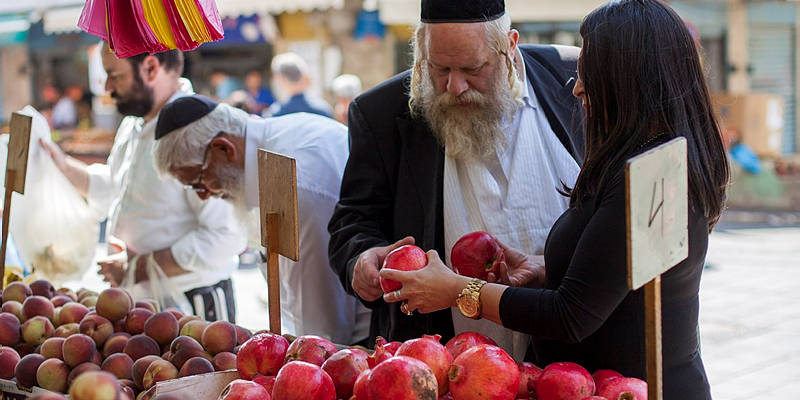Rosh Hashana, the Jewish New Year, is observed on the first day of the Hebrew month of Tishrei. Customs vary according to cultural background, but the essence is the same.
Most people do not realize that the term “Rosh Hashana” does not appear anywhere in the Torah, although it is one of the best-known Jewish holidays. The Torah calls it Yom Teruah, meaning, the “Day of Blowing,” referring to the shofar, of course. It is also called Yom Hazikaron, “the Day of Remembrance,” in Rabbinic literature, referring to the theme of the day, which is God recalling and “remembering” our deeds of the past year.
It is interesting to note that the month of Tishrei is actually the seventh month on the Hebrew calendar. The first month of the year is Nissan, the month of Passover. The calendar year, however, changes in Tishrei.
Rosh Hashana, which is a two-day celebration, begins the “High Holy Day” season, or Yamim Nora’im in Hebrew, which continues until Yom Kippur, the Day of Atonement. Rosh Hashana is the anniversary of the creation of Adam and Eve, the first man and woman. Rosh Hashana customs include sounding the shofar (a hollowed-out ram’s horn) and eating symbolic foods such as apples dipped in honey to evoke a sweet New Year. We’ll get to more of that soon.
The way that Jewish people greet each other on Rosh Hashana is, frankly, a fascinating subject on its own, reflecting the different cultures, communities and levels of observance. The most common Rosh Hashana greeting is Shana Tova, which in Hebrew means, “Have a good year.”
Many Ashkenazi Jews, especially the orthodox, use the Yiddish greeting Ah gut yohr (“A good year”) or Ah gut gebentched yohr (“A good blessed year”). Sephardic Jews traditionally greet one another in Hebrew with Tizku l’shanim rabot or with the Spanish Muchos anos, both of which essentially mean, “May you be blessed with many years.” In more orthodox circles, among both Ashkenazim and Sephardim, the Hebrew greeting Ketiva VeChatima Tova is used, which means, “May you be written and sealed for a good new year.”
Between Rosh Hashana and Yom Kippur the festive greeting is Gmar Chatima Tova, which means, “May you be sealed for a good year.” Many people continue the festive greetings until the end of Sukkot with Gmar Tov, meaning, “May your conclusion [of the holiday season] be a good one.”
A Day of Judgment
Rosh Hashana is a day of judgment. We are taught that “the books” are opened on Rosh Hashana in which the deeds of all humanity are reviewed, and each person passes in front of God for evaluation. People are placed in one of three categories: the righteous, the intermediate and the wicked. The righteous are sealed for a good year on Rosh Hashana, the wicked are sealed for a bad year, and the intermediates have until Yom Kippur to tilt their judgment for the better.
It would not be possible write about Rosh Hashana without discussing the many delicious ritual foods that are eaten. Rosh Hashana meals usually include apples and honey, to symbolize a sweet new year. Many other foods with symbolic meaning are eaten as well. For example, many people eat, or at least place on the table, the head of a fish to symbolize the prayer ,”Let us be the head and not the tail.” Other common symbolic foods include: dates, black-eyed peas, leek, spinach and gourd. Pomegranates are very common as well. A special prayer is recited just before or just after eating the symbolic foods.
The Tashlich (throwing away) ceremony is worth mentioning. Tashlich is performed on the afternoon of the first day of Rosh Hashana by Ashkenazi and most Sephardi Jews. Special prayers are recited near natural flowing water, and with it, one’s sins are symbolically cast into the water. Many also have the custom to throw bread or pebbles into the water to symbolize the casting off of sins. In some communities, if the first day of Rosh Hashana occurs on Shabbat, Tashlich is postponed until the second day. Tashlich can be performed any time until Hoshana Rabba (near the end of the holiday season), and some Hasidic communities perform Tashlich on the day before Yom Kippur.
Wishing all of our readers a Shana Tova! A New Year of blessing!
By Rabbi Ari Enkin,
UWI Rabbinic Director

